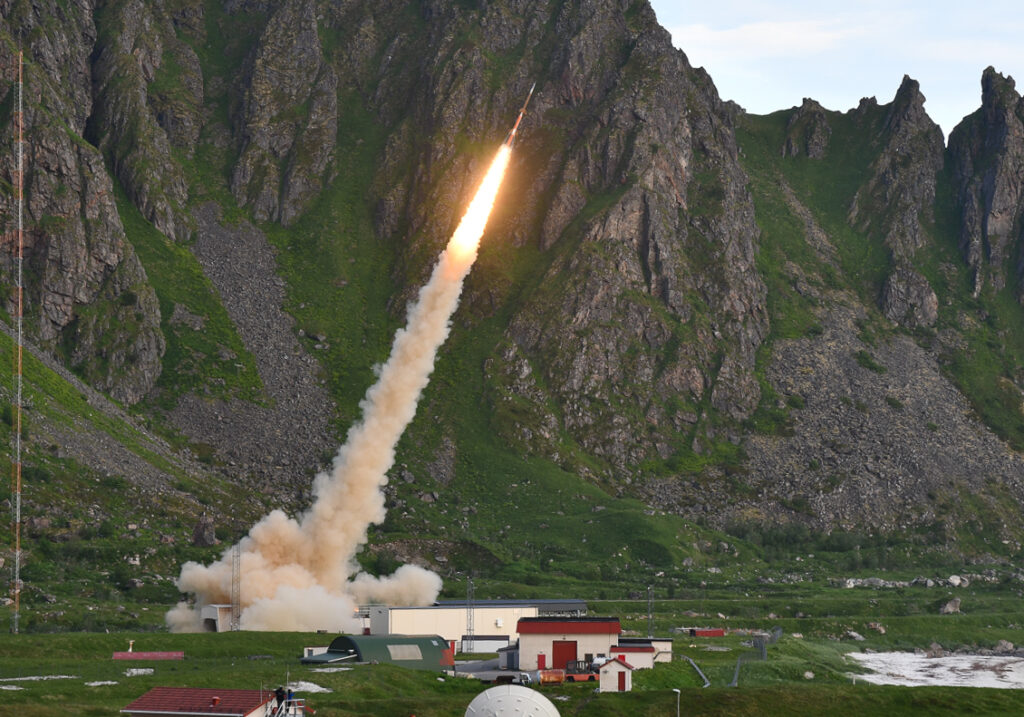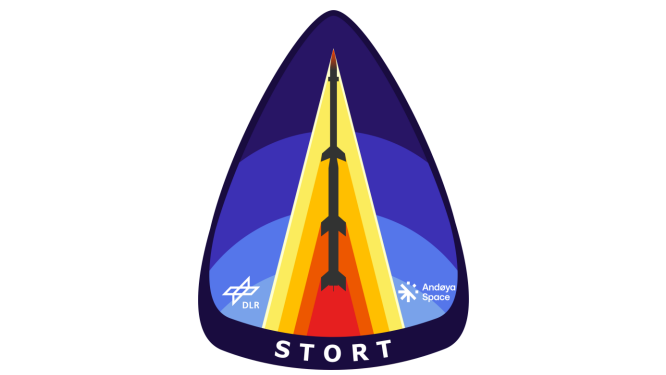At June 26th, 04:19 local time, the German sounding rocket “STORT” successfully soared into the sunny summer night above Andenes.
The acronym STORT stands for “Schlüsseltechnologien für hochenergetische Rückkehrflüge der Trägerstufen”, which translates to “Key technologies for high-energetic return flights of reusable launcher stages”.
For the design and certification of spacecraft components, numerical and experimental methods for multidisciplinary applications must be developed and validated. Therefore, the comparison of numerical and experimental data with flight data is indispensable. In the STORT project, all three tools mentioned are used for the development and qualification of key technologies for high-energy return flights of reusable launcher stages.

Numerical, experimental and flight data
Numerical design methods still have great shortcomings in estimating the integral heat loads and temperature spikes on key components of a spacecraft. Ground-based experiments can only simulate flight segments with partially inaccurate flight conditions.
In the high-speed flight sector, aero-thermodynamic processes, such as thermal and chemical interactions between the vehicle surface and high enthalpy flow play an important role in spacecraft design. Since previous flight experiments did not allow such conditions, a flight experiment for a velocity of Mach 8 is performed on a suppressed trajectory.
The preparation of the flight experiment will be accompanied by dedicated ground-based experiments with modern diagnostics. The experimental data are analyzed with advanced and efficient evaluation algorithms. Both the flight data and the ground experiments are used to improve the numerical methods.
The main goals of the project
- System analysis of high-energy flights of reusable stages of launchers
- Aerothermal and mechanical prediction of highly loaded structures with existing tools
- Development of reusable structures with high reliability
- Use of modern diagnostics to characterize the test objects and test environments
- Qualification tests in ground-based facilities on high-temperature structures and materials
- Development and testing of ground demonstrators
- Execution of a flight experiment for flight testing of high-temperature components
- Development of a three-stage launch vehicle delivering Mach 8 at 50 km max altitude
- Multidisciplinary post-flight analysis
Within the scope of STORT, a project within the German Aerospace Center (DLR), several technology and hardware developments culminated in this flight experiment using a newly developed three-stage sounding rocket motor. The vehicle flew on a suppressed trajectory with an apogee of 38 km and velocities exceeding Mach 8 to provide high-enthalpy experimental conditions for hypersonic aero-thermal research.
The initial data analysis by DLR confirms a successful flight; the detailed analysis of scientific data is already underway. DLR also expresses their gratitude to Andøya Space for the support during the STORT campaign.


